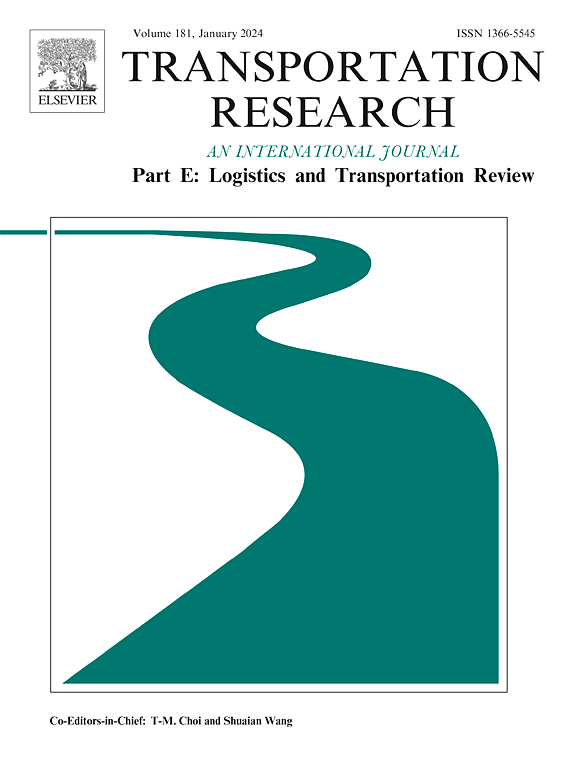Should an electric vehicle manufacturer buy its own ship? Investment and pricing strategies under uncertainty
IF 8.3
1区 工程技术
Q1 ECONOMICS
Transportation Research Part E-Logistics and Transportation Review
Pub Date : 2025-02-04
DOI:10.1016/j.tre.2025.103990
引用次数: 0
Abstract
Rising EV exports and regional instability have increased shipping costs. Many electric vehicle manufacturers (EVMs) purchase and operate newly built pure car and truck carriers (PCTC), which are greener and more energy-efficient than traditional car carriers, to lower shipping costs and improve global supply-chain resilience. Meanwhile, EVMs strategically adjust EV prices and production quantities in response to demand shocks caused by unexpected tariffs and economic crises in end markets. To address these challenges, a two-stage decision-making model is proposed to optimize the investing and operating strategies for the EVM. In this model, the EVM first decides whether to purchase PCTC and the ship size, and then decides the optimal EV price and production quantity facing demand uncertainty. Theoretical analysis indicates that the EVM should utilize self-operated shipping under stochastic or linear deterministic demand to enhance cost efficiency while relying on other shipowners under non-linear deterministic demand. Furthermore, the EVM should increase the EV price under the additive stochastic demand and decrease the EV price under the iso-elastic stochastic demand, compared to deterministic consumer demand. In numerical analysis, we consider an emerging EVM, NIO, that exports Chinese EVs to the European market. Numerical results suggest that the EVM should create an “artificial shortage” to maintain a tight market during increased shipping costs or rising demand uncertainty while fostering a loose market to serve all available consumers when demand uncertainty is low.
求助全文
约1分钟内获得全文
求助全文
来源期刊
CiteScore
16.20
自引率
16.00%
发文量
285
审稿时长
62 days
期刊介绍:
Transportation Research Part E: Logistics and Transportation Review is a reputable journal that publishes high-quality articles covering a wide range of topics in the field of logistics and transportation research. The journal welcomes submissions on various subjects, including transport economics, transport infrastructure and investment appraisal, evaluation of public policies related to transportation, empirical and analytical studies of logistics management practices and performance, logistics and operations models, and logistics and supply chain management.
Part E aims to provide informative and well-researched articles that contribute to the understanding and advancement of the field. The content of the journal is complementary to other prestigious journals in transportation research, such as Transportation Research Part A: Policy and Practice, Part B: Methodological, Part C: Emerging Technologies, Part D: Transport and Environment, and Part F: Traffic Psychology and Behaviour. Together, these journals form a comprehensive and cohesive reference for current research in transportation science.

 求助内容:
求助内容: 应助结果提醒方式:
应助结果提醒方式:


